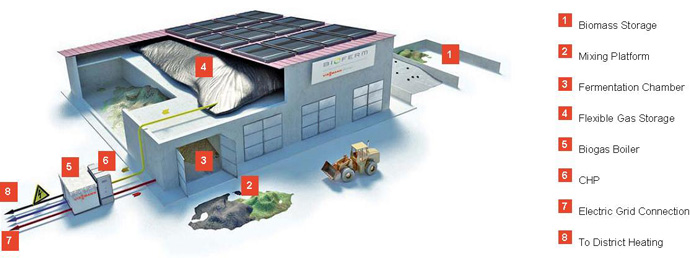Anaerobic digestion is a series of biological processes in which microorganisms break down biodegradable material in the absence of oxygen. One of the end products is biogas, which is combusted to generate electricity and heat, or can be processed into renewable natural gas and transportation fuels.
There are many different types of anaerobic biodigesters.
They are used around the world to converting livestock manure, municipal wastewater solids (including the Madison-area), food waste, high strength industrial wastewater and residuals, fats, oils and grease (FOG), and various other organic waste streams into biogas. Separated digested solids can be composted, utilized for dairy bedding, directly applied to cropland or converted into other products. Nutrients in the liquid stream are used in agriculture as fertilizer.
The digester illustrated below is a dry fermentation system. The illustration is courtesy of BioFerm Energy Systems.


